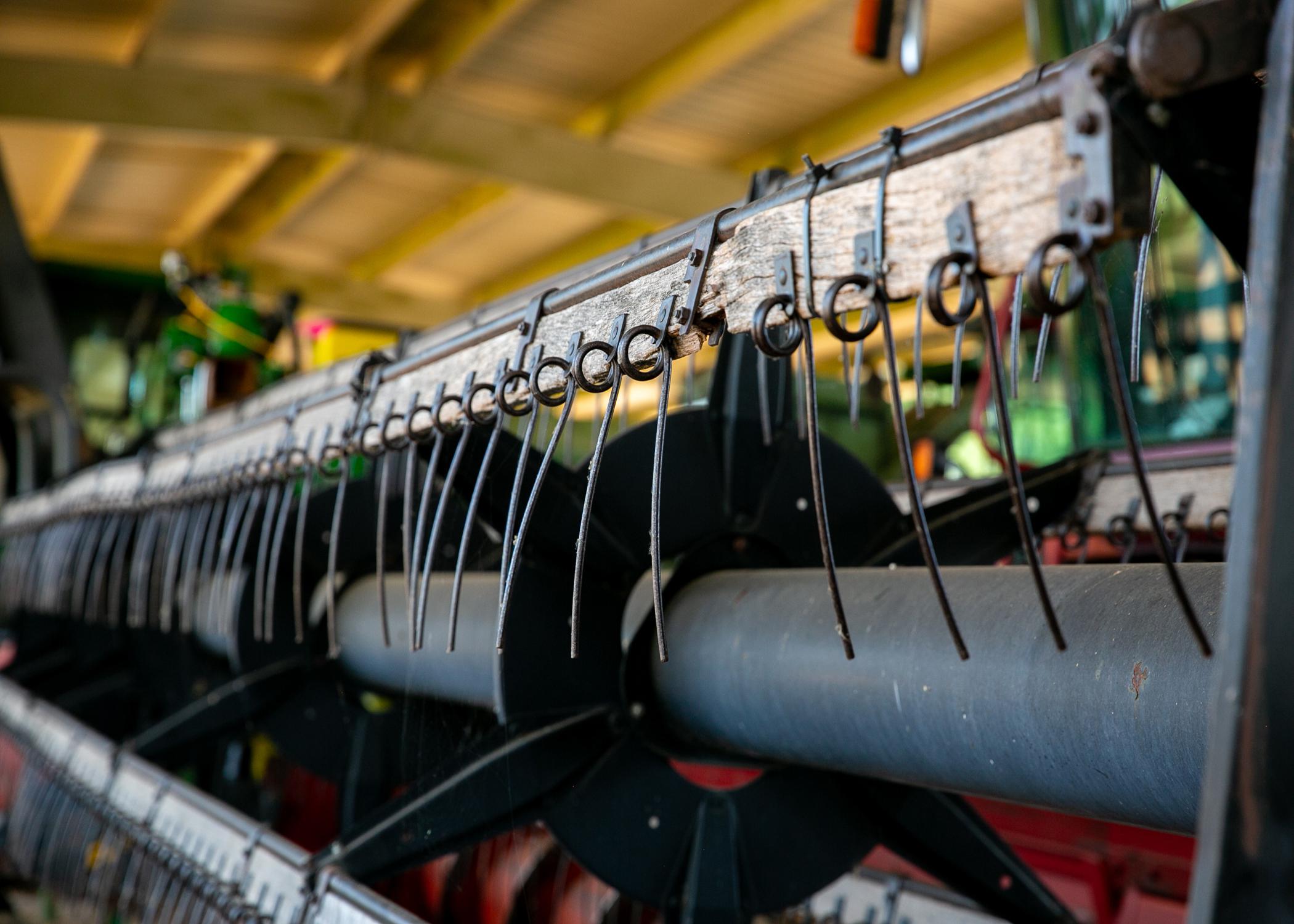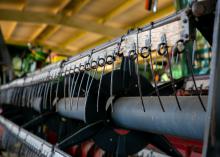MSU specialists help producers prepare for challenging year
STARKVILLE, Miss. -- For agricultural producers, careful planning in advance of each planting is critical to making a profit or breaking even, but the practice will be especially necessary going into 2025 due to a confluence of unfavorable economic conditions.
Kevin Kim, Will Maples and Brian Mills, agricultural economists with the Mississippi State University Extension Service, are part of an effort to help producers make sound business decisions as they enter what will likely be a difficult year financially across the country for agriculture.
“We’re at a point where if producers don’t start doing something to prepare, they’re going to be in trouble,” Maples said. “The time to start planning is now.”
To meet producers’ budgetary and planning needs, MSU Extension has recently issued a set of publications titled “Farm Financial Analysis Series.” The five publications cover farm financial health, balance sheets, cash flow statements, income statements and farm finances in turbulent times.
Margins are already slimming this year as commodity prices are falling after relatively strong results from 2021-23. At $3.98 per bushel, September prices for corn were 23% lower than September 2023, according to data from the U.S Department of Agriculture National Agricultural Statistics Service. September prices for soybeans were $10.20 per bushel, which is a 29% decline from a year before. Cotton declined 21% from a year ago to 60 cents per pound.
“This is a very significant amount, but corn and soybean prices were at record-high levels in 2020 and 2021,” Kim said. “Those prices are still above long-term averages. The difference here is production expenses increased way too much.”
Mills noted that the costs of inputs -- seed, fertilizer, fuel and labor among others -- rose alongside the commodity values.
“Inputs always come down slower than prices, so when we saw prices fall this year and margins were already tight, we knew farms were going to become less profitable,” Mills said. “When you have high inputs and low crop prices, it’s a lot riskier for banks to loan on something that they think might not make a profit.”
Kim added that production expenses are well beyond historical averages to the degree that many row crop growers will likely be unable to cover their production costs for the upcoming crop, even with futures prices forecasting a slight increase in 2025.
Some relief could come in the form of a U.S. House bill introduced in October by U.S. Rep. Trent Kelly, R-Miss., termed the Farmer Assistance and Revenue Mitigation Act of 2024, or the FARM Act.
“The initial draft proposal was for the program to cover up to 60% of net losses that a producer incurred for this year,” Kim said, “so if a producer loses $100 per acre this year, then this program would give $60 per acre back.”
Mills said residents of rural communities may want to pay special attention to this situation, even if they are not working in agriculture themselves, because of the spillover effect of the health of one industry on others. Equipment dealers have laid off employees in anticipation of less business, he noted, and if farmers start cutting back on production volume, input suppliers making less money will have to consider cuts of their own.
“There are rural communities around farms that are based on how well those farms are doing,” Mills said. “We think about just the farm, but there’s still the bank, there’s still the retailer, there’s the machinery dealer and grain buyers, so when the farm is suffering, these rural communities are suffering as well.”
Another factor in crop price instability, ironically, is the quality and quantity of yields achieved, particularly with soybeans. The amount of supply, coupled with foreign competition and the potential for tariffs in the U.S. on foreign goods in the near future, is suppressing prices.
“We’ve got a record soybean crop this year, and we’ve had two straight years of good corn crops,” Maples said. “On the demand side, export markets are really weak this year. We’re not selling near as many soybeans to China as we were because of competition from Brazil, which is also expected to have record soybean and corn crops.”
The nation’s reliance on export markets means potential tariffs on foreign goods could pose an additional threat for producers.
Maples added that prolonged years of tight margins could mean the state’s agriculture industry will likely see some consolidation in 2025 and beyond.
“At current prices, farms are going to be hit pretty hard over the next few years. You’re likely going to lose some producers,” he said. “Some producers are going to retire, and it will be harder for younger folks to enter the business. Some growers may have to give up some rental land and get small enough to decrease their rental costs.
“Many of the remaining farms are going to get bigger, and there’s going to be as much farming taking place as there has been,” Maples added. “It’s just going to be fewer farmers doing it.”
Regarding inventory, Kim said one option producers have to help themselves is to offload what they use the least.
“If you don’t pay your immediate financial obligations, you can get into bigger trouble,” he said. “If you have unused assets like machinery and equipment and there is value for them, we always recommend you sell those to help pay off debt.”
Kim said based on information from the Federal Reserve Bank of Kansas City that farm loan interest rates will fall slightly in 2025 but will still be above levels observed as recently as 2021.
“The most recent farm operating loan interest rate is 8.83%, and for the farmland real estate loans, it’s 8.04%,” Kim said. “2021 numbers were 4 to 5%, so the rates have almost doubled with the federal fund rate hike. The rates will go down, but it won’t go down as fast as it has increased in the last three years.”
A silver lining, Kim said, is that agricultural land values are holding steady, noting the U.S. Department of Agriculture’s August forecast of a 3.5% increase in cropland value in 2024 to an average of $3,880 per acre.
Producers will have the option to refinance their existing debt to put themselves in a lower interest rate bracket, but they may have more trouble securing a new loan.
“We’ve heard from bankers who are worried about having to turn borrowers away,” Maples said. “A lot of loans for inputs are held by the retailers, and manufacturers of those products are also concerned and hesitant to give more of those loans out because they don’t know if they’ll be repaid.”
Mills suggested producers keep meticulous records of cash inflows and outflows.
“The biggest thing is going to be putting together a list of estimates on your budgets, showing the bank that you have a path forward to be profitable,” Mills said. “The more detailed information and plans you have for your farm, the better you will be able to negotiate with the bank and reduce the chance of them telling you no.”
More information on economic conditions in agriculture will be provided at the 2025 Mississippi Agricultural Outlook Conference Jan. 14 at the Mill Conference Center in Starkville. The conference is hosted by the MSU Extension Service and the Mississippi Agricultural and Forestry Experiment Station.
The MSU Extension Farm Financial Analysis Series publications are available online at https://extension.msstate.edu/publications/.








